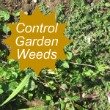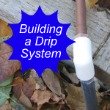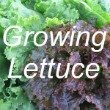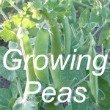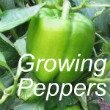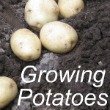|
GROWING ONIONSGrowing onions is easy, and onions do well in a variety of conditions. They are in the same family as garlic and have many of the same growth requirements. It’s a good thing to learn how to grow onions because they have valuable medicinal properties that are similar to garlic.

Onions require a long growing season. They need to mature by the beginning of August so that they’re ready to be harvested. This gives them enough time to dry out before they’re stored. Planting Onions Planting OnionsOnions can be started by planting seeds, small plants, or bulbs. I personally prefer to plant the little onions that have been grown in a pony pack. These onion plants have two advantages: 
If you’re growing onions from seed, you should start them inside about 2 months before you want to transplant them into your garden (in Utah that’s about the end of January). See starting seeds indoors.
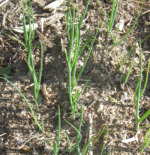
 One way to optimize the space in your garden is to plant the lettuce next to the onions. The onions won't start getting big until lettuce season is over.
One way to optimize the space in your garden is to plant the lettuce next to the onions. The onions won't start getting big until lettuce season is over.When the weather starts getting hot and the lettuce starts getting a bitter taste, pull out the lettuce. This leaves room for the onions to get big. The onion seeds, seedlings, or bulbs can be planted early in the spring. They are quite cold hardy and will withstand the early spring frost. See
Vegetable Planting Guide. 
By planting them early it will give them time to develop into a big onion prior to harvesting them in August.

Back to Top Growing and Harvesting Onions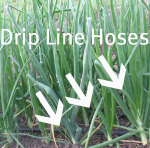
You don’t have to do much during the summer except:
In the mountain west area, a rule of thumb is “Never let the onions see the August sun”. In other words harvest your onions the first part of August. 
Back to Top Collecting Onions Seeds
There may be a few plants that will go to seed. If the onions go to seed their first year, they will not produce good seed. During the winter, store a few onions in a dark, cool, dry area. To grow your own onion seeds, you need to plant a mature onion from last year's crop. This mature onion will go to seed and produce good seed. Storing Onions
Onions need to be stored in a place that is cool and dry. You can put them in open mesh bags or old pantyhose. The idea is that you want air to be able to circulate around the onions. Hang the bags in a place where they won’t freeze (our garage works well for us). When stored properly the Yellow Spanish Onions keep all winter long with little spoilage. In the early spring when the onions want to start growing again, you can chop up the onions and freeze them. Use these frozen onions until the new crop starts producing. We rarely have to go to the store to buy onions. Return To:Gardening Vegetables from Growing Onions |









